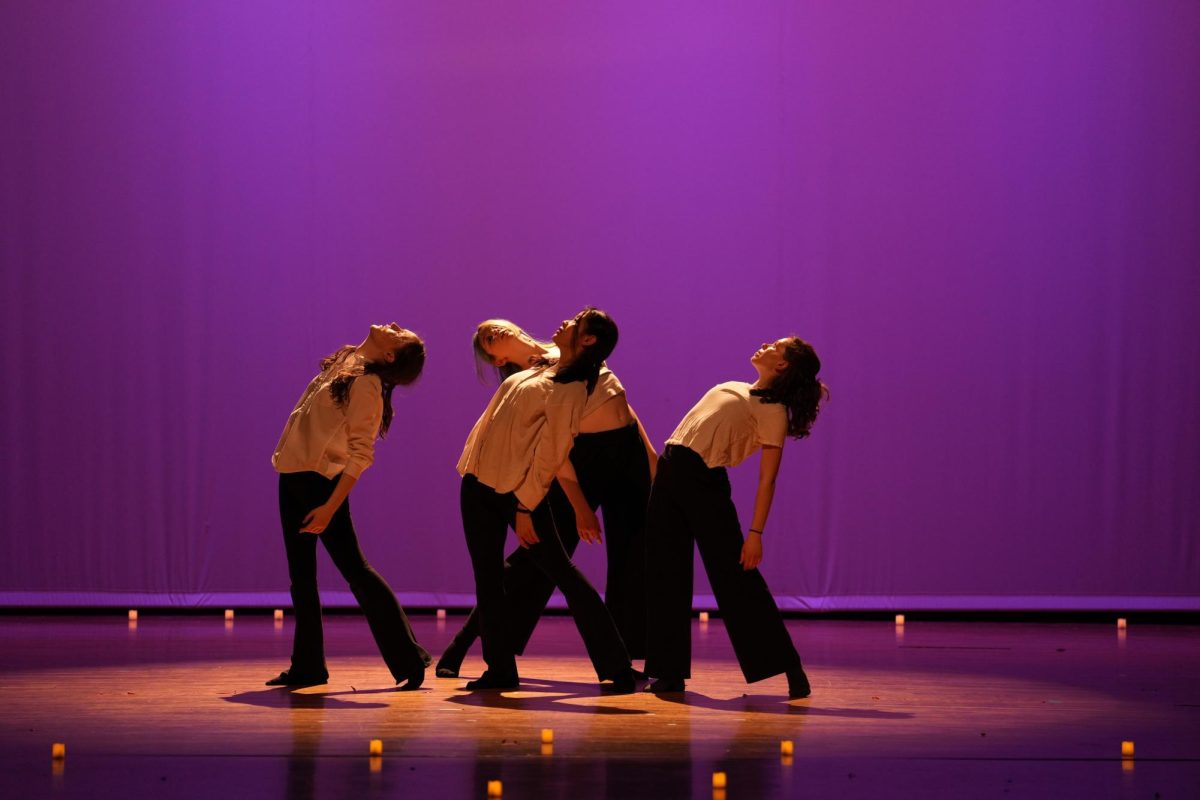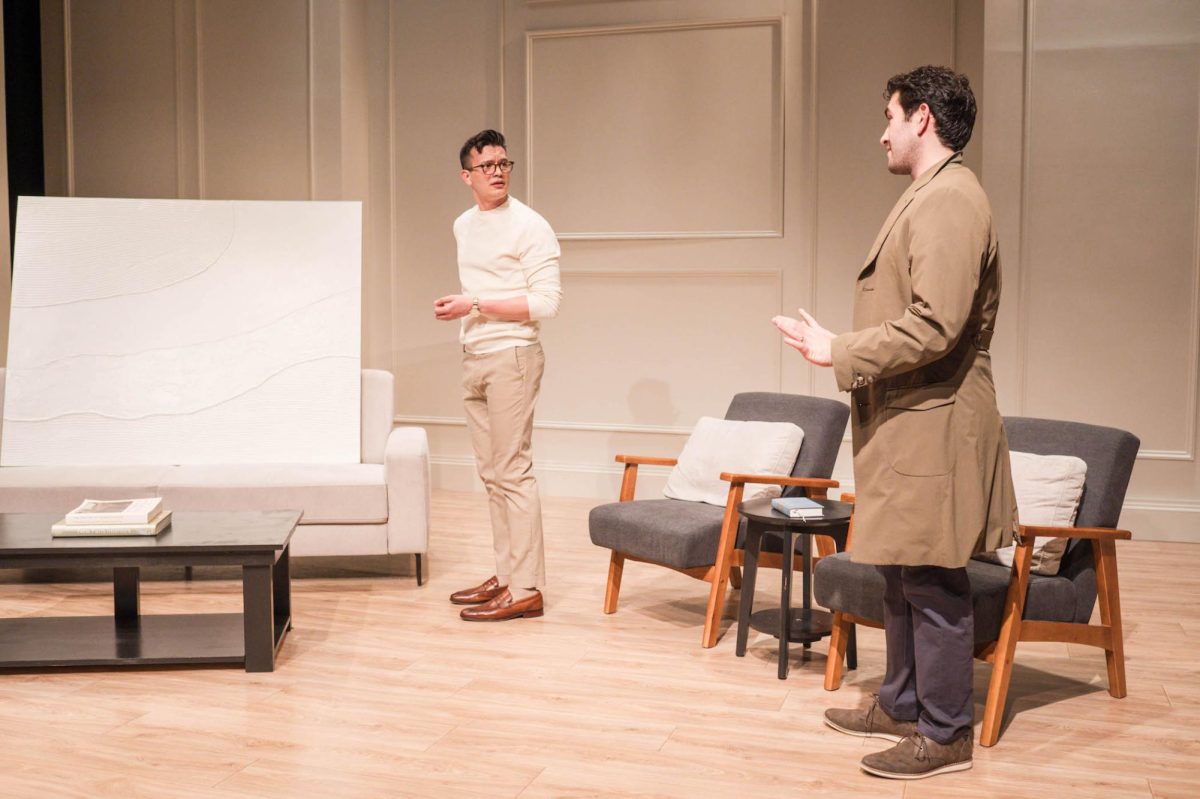A minute into The Day on Which a Man Dies, the audience was transfixed: The show begins with a curtain made of paper being torn violently to the floor to reveal a near-naked man painting with exaggerated concentration. It was a dramatic start, to say the least.
The production is the latest from David Kaplan, the curator and co-founder of the annual Provincetown Tennessee Williams Festival in Massachusetts. Kaplan, who has directed a number of plays abroad in languages such as Russian and Cantonese, presented the world premiere of this version of The Day in Chicago. Tennessee Williams wrote the script in 1960 and affixed to it the handwritten note “finished 1960,” but never published it. Later, following the suicide of friend and fellow playwright Yukio Mishima, to whom the play was dedicated, Williams revised the story and changed the title in 1971. Kaplan’s production of The Day came into existence alongside SummerNITE, the resident professional theater company at Northern Illinois University’s School of Theatre and Dance.
The venue for this production is certainly of note. The Day is housed in Links Hall, a small Belmont-area venue upstairs from a nightclub, whose music occasionally interrupts the show. Links Hall sits next to the El-train’s tracks, and three separate lines go rumbling by at regular intervals, each time augmenting the tension onstage with a characteristic thump-thump-thump and screech. And this—or at least something to this effect—was very much intentional.
“I didn’t want it done in a theater,” said Kaplan. “I wanted it done in an art gallery or a museum or a performance space.”
That non-theater feel is precisely what he got. Links Hall is not a nice space, but it adds a certain something to the production. The house seats just 65 in three rows of folding chairs, and bare lightbulbs shine throughout the show alongside a few standard lights that create the simplest of washes. Apart from a few furniture pieces—a clothes rack that doubles as a door (and that is labeled “door” in Japanese characters, for the bilingual and confused), an easel, some stools—the set is made entirely of paper.
The Day tells the story of an artist, known simply as “the Man,” at an uncertain time in his career. He has begun to paint not with a brush but with a spray gun, and his agents as well “the Woman,” as his lover of 11 years, have very serious doubts about his new work and his sanity. While the Man grapples with his need for simple artistic freedom, the Woman repeats again and again her desire for a “legal position” in his life. Throughout the play, a character called “the Oriental,” an echo of Mishima, appears and comments on the action. A fourth actor, “the Second Stagehand,” passes through scenes as a silent assistant, bowing and turning sharply around corners.
The audience was generally kept interested throughout the 78-minute production, but not always for the right reasons. The four-person cast was led by a very convincing Jennie Moreau as the Woman, but hindered in equal degree by the slovenly performance of Steve Key in his role as the Man. Where Moreau was poised, Key was scattered; where Moreau put the audience at ease, Key kept the audience very much aware that he was acting. Struggling through a muttering and somewhat incomprehensible Southern drawl, Key gave the impression that he had already been lost in a play whose central issue was his final tumble to the end. He seemed, at several points, to be startled by the set and confused by his lines, but in a way that, if intentional, served only to distract the audience. Gerson Dacanay’s the Oriental was superb save for an excruciatingly forced Japanese accent, but his commentary and appeals to the audience were nevertheless both moving and often quite funny. The Second Stagehand was a remote character, but Faith Streng’s rendition seemed all the same entirely out of place—her forced, choppy, awkward movements were hugely distracting whenever she was on stage.
But what the production suffered from most was not budget osr acting flaws, but rather a generally weak text. Williams chose not to publish this text despite having written it at the height of his popularity, filing it instead out of the sight of the public. While Kaplan maximizes the merit of the text, it scarcely feels like a Williams piece at all.
The production succeeds in several respects: in its communication of Williams’s clear struggle with the differences between Eastern and Western art, in its occasional humor, and even in the often-fumbled dissolution of the fourth wall. The humor and intrinsic trust inspired by Moreau and Dacanay almost make the show worth seeing. But as anything beyond a look at Williams’s doubtful and forgotten minor work, The Day doesn’t quite fit the bill.







